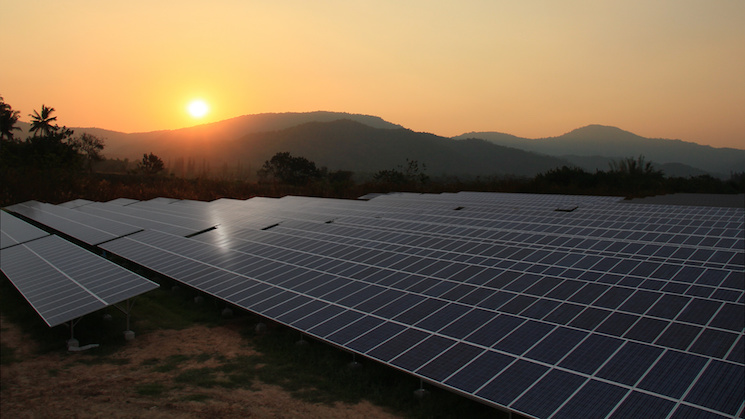August 3, 2013


In most areas of the country, installation activity in residential solar thermal (ST) has not followed the upward trajectory of residential photovoltaic (PV) installs, as artificially low natural gas prices and stubbornly high installation costs often make solar thermal a tough sell. However, many firms are finding success in commercial applications for solar heat, filling the need for high-volume domestic hot water, space heating/cooling and process heat.
Significant benefits can be derived from the superior efficiency of solar thermal methods, which typically yield four to five times the energy of PV panels with the same area, but in the form of heat instead of electricity.
The extensive areas of the country that do not have access to natural gas for heating are prime candidates for commercial solar thermal applications at present, but competitive projects are also being completed in areas served by gas. Commercial and institutional entities with a longer-term view of their energy needs are more likely to recognize the return on investment (ROI) provided by ST. A properly designed thermal system with a lifespan of 30 years or more can easily provide greater than 10 percent ROI, higher in areas where the only alternatives for heating may be oil and pro- pane. And these returns are even more attractive in states that include thermal processes in their renewable portfolio standards (RPSs). Increasingly, heat energy produced by ST is becoming eligible for renewable energy certificates (RECs). Harvesting RECs is most effective in large-scale applications, where high production volumes and accurate energy monitoring are the norm.
One advantage in implementing commercial and industrial-scale applications for ST is economies of scale. As in large PV installations where cost per watt diminishes as systems get bigger, the cost per Btu in large thermal applications can also drop substantially. Balance-of-system costs, such as control systems and integration into existing heating plants, don’t get much higher with larger arrays of solar thermal panels, so there is often good incentive to occupy as much roof space as possible to meet a higher proportion of the facility’s total heating (or cooling) costs. Larger arrays can also meet higher temperature requirements for cooling (via absorption chillers), process heat (for instance in dairies, food processing and certain chemical processes) or space heating. An additional advantage of ST is that every installation can store energy in the form of heat, often for hours. Try that with PV!
This spring’s ASES’ SOLAR 2013 conference in Baltimore, Md., included a panel discussion on new market opportunities in solar thermal, in which commercial applications figured prominently. The panel was hosted by Mike Healy, director of market development for Skyline Innovations in Washington, D.C., and chair of the U.S. Solar Heating and Cooling Alliance (SHC Alliance), recently launched as a division of the Solar Energy Industries Association (SEIA). Healy says, “Solar heating and cooling is especially viable in multi-family housing, an area PV often doesn’t get to.” He feels that a combination of better financing models and putting ST on an equal footing with PV under state policies will greatly expand demand for solar heating applications. A few smart firms are also finding that power purchase agreements are just as applicable to thermal energy as they are to PV-generated electricity.
More advanced controls and monitoring are becoming a requirement for larger system installations, says Chris Wetherby, head of the solar department at Stiebel Eltron in West Hatfield, Mass. “On-site plant engineers, facility managers and off-site OEM [original equipment manufacturer] staff want to know how their systems are performing 24/7. They need the ability to remotely access an installation for commissioning, troubleshooting and accurately monitoring thermal production, in conjunction with overall system function.” To address thermal production monitoring, a subcommittee of industry experts organized by ASTM International is working on a U.S. standard for heat metering, which will provide greater accountability for solar thermal RECs.
New state policies for solar thermal, improved recognition of the long-term benefits for large-scale applications, new financing mechanisms and better monitoring/control technologies are coming together to enhance the outlook for commercial solar thermal. Installers we talked to at SOLAR 2013 have seen a significant up-tick in commercial work, particularly in states that include solar thermal in their RPSs. ASES’ Solar Thermal Division will continue to spread the word of the benefits of solar thermal technology. We look forward to hearing more success stories in 2014!
Ron Gehl, P.E., is president of EOS Research Ltd. and chair of the ASES Solar Thermal Division.




